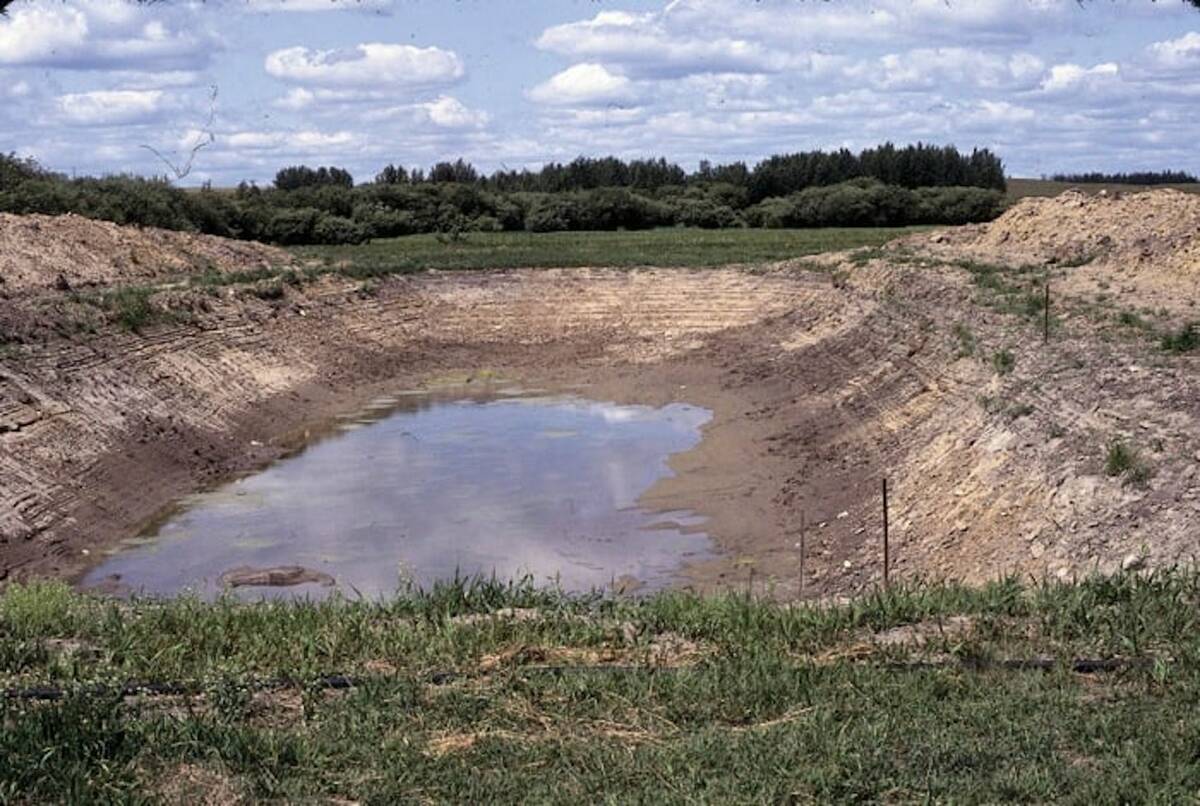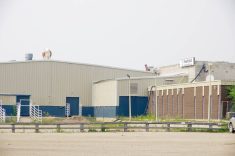SMITHERS, B.C. — Forage and pasture accounts for 78 percent of British Columbia farmland but it is often an under-appreciated resource.
“It is probably our biggest commodity,” said Geneve Jasper of the B.C. ministry of agriculture.
“Forages are inextricably linked to major livestock production,” she said at the B.C. Cattlemen’s Association annual meeting held in Smithers May 31-June 2.
About 776,000 head of cattle, bison, sheep, goats, horses, llamas and others rely on forage production. If B.C. wants to expand, livestock requires good feed.
Read Also

Dry summer conditions can lead to poor water quality for livestock
Drought conditions in the Prairies has led to an decrease in water quality, and producers are being advised to closely monitor water quality for their animals.
The government released a preliminary report on rebuilding forage supplies in the province, which includes goals and challenges.
The first phase of the study looked at forage needs on private lands and a second phase will look at public land within the agriculture land reserve.
Forage lost prominence because of government cutbacks on research and research farms across Canada, said Serena Black, head of the B.C. Forage Council.
“The majority of forage is used on-farm and your pasture can be a large part of your land base but you are not pulling things off and selling it so forage gets overlooked across the country,” she said.
“Forage is the third-largest crop by hectare in Canada. We are a very large industry but it is often not on the forefront of producers’ minds,” she said.
The goal is to increase the quantity and quality of forage throughout but the province needed to know the challenges and opportunities.
Seven public meetings were held across the province and an online survey sought producers’ opinions about needs and future directions.
The preliminary report said quantity and quality must increase to improve livestock performance. Forage growers need better access to domestic and international markets, and the sector needs more innovation and research and the capacity to respond to changing weather.
Surveyors asked producers about their practices and found about half test forage quality. About the same number regularly test soil quality. About 70 percent said they have changed grazing management and 58 percent said they have used new equipment.
More than seven percent said it is a financial cost to do any innovation and almost half of the respondents wondered about the value and return of making improvements.
The top challenges were consistent.
Wildlife damage is the top issue among the forage growers surveyed. More than 60 percent identified problems with deer, elk, wild fowl and bears raiding and ruining their feed supplies.
Recommendations called for better compensation for wildlife damage.
Ranchers and the public are at odds over the issue with many ranchers feeling they are giving away valuable crops to feed wildlife, while the public is generally opposed to major wildlife control efforts.
Water availability was the second issue and land availability and affordability was third.
“Development adjacent to farmland increases land prices, conflicts and congestion. Then there is the increased risk of invasives getting onto your farm, and having drainage issues,” Jasper said.
Other problems included invasive plants, pests, diseases and changing weather.
Many forage growers agreed they need help.
“Most producers in the industry said they need more locally relevant research and extension and knowledge transfer,” Jasper said.
B.C. specific research and knowledge transfer were also identified as key points because there has been limited work in some parts of the province.
Long-term initiatives that outlive funding cycles are needed because forage research needs years of data.
Producers said they want the ministry of agriculture to be more involved with research and education duties as an unbiased source of information.
They want better access to water that is not subject to prohibitive regulations or high costs. They also need locally based and relevant climate adaptation research trials.
Producers want their right to farm protected where land-use regulations incentivize the productive use of land suitable for forage.
The province has promised to hire a forage specialist to replace the last person who retired in 2004.
Extension services are essential, said Black, because farmers do not often have time to pursue research on their own and they want variety trials suited to their areas. They also want ways to improve forage stands.
A lot of existing research originated from the Prairies, introducing crops like corn, alfalfa and sainfoin or new grazing practices, but these did not always adapt to B.C. conditions.
The council wants to work more with the forestry ministry to develop silvopasture on crown land.
If B.C. wants to build abattoirs, beef quality has to be improved and that comes from better feed.
Last year, B.C. experienced its worst fire season in recorded history. Thousands of acres of forage and forests were lost offering a research opportunity to assess regrowth and quality after such devastation.
The hardest hit area was the Cariboo region, a district between Kamloops and Prince George, where significant acres are grassland.
A new Cariboo agriculture alliance consisting of 32 groups was formed with discussions about rejuvenation in the area.
“This is a perfect opportunity to look at agro-forestry and what happens when you leave a completely bare area to rejuvenate,” she said.
Simple grass seed mixes have been made available to control erosion but there could be new research opportunities.
“This is a most opportune time to start looking at bringing in a large standing trial where you try several different management practices so that in the future when we have more of these extreme events happening, we will have some data as to what might work better to re-establish these systems that are extremely diverse,” she said.
Finding money has been challenging but she hopes the forage action plan could generate funds for long-term forage trials in every part of the province to test their success.


















